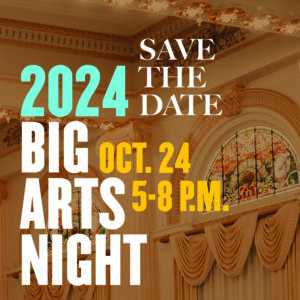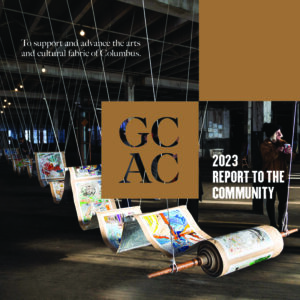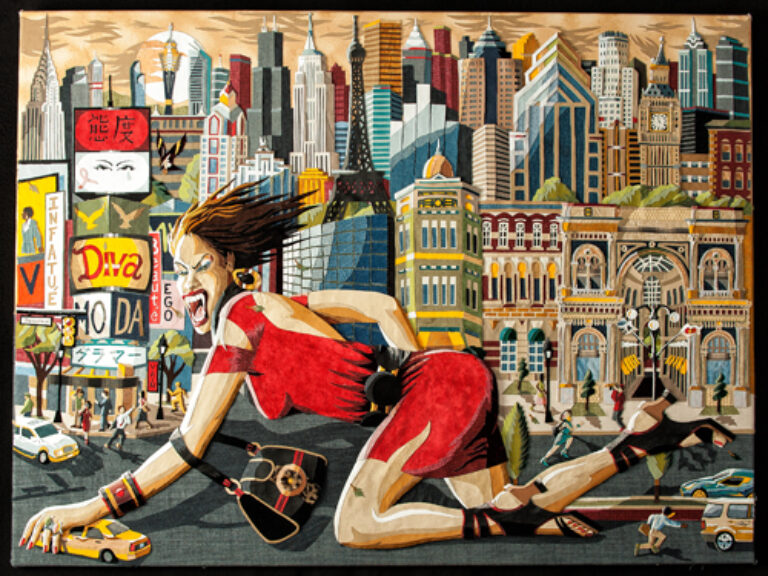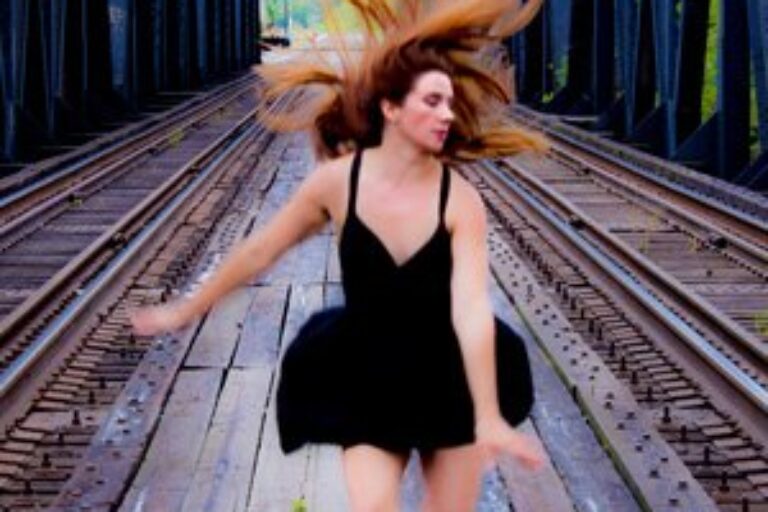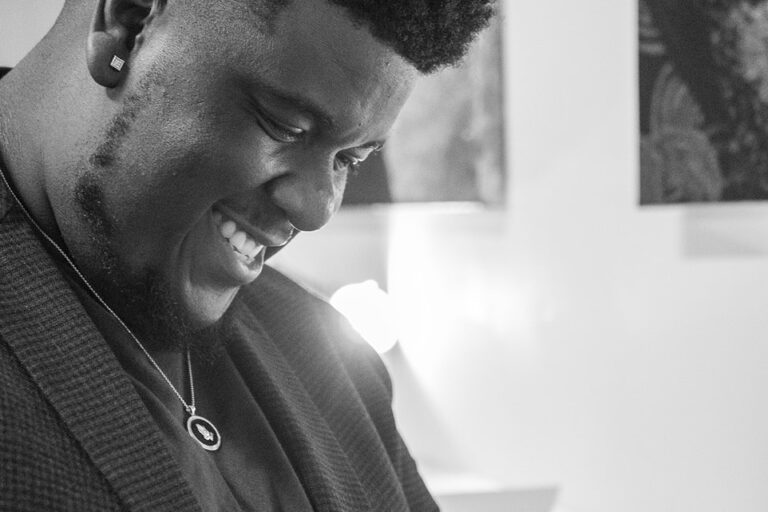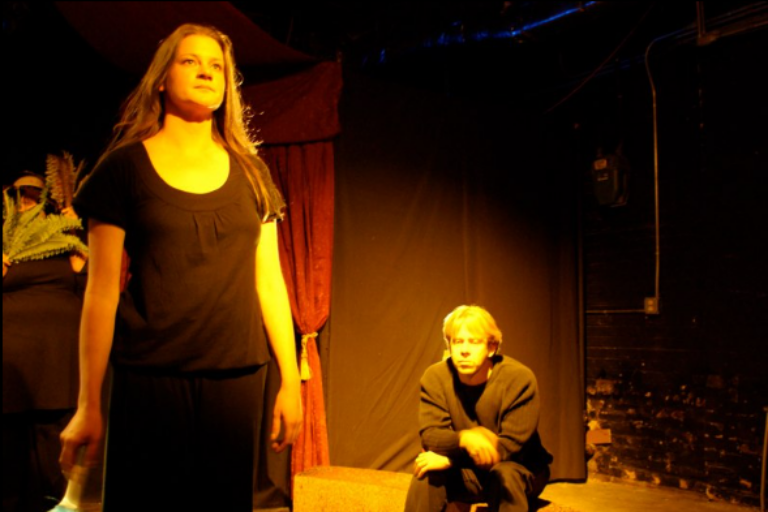The February issue of GCAC’s monthly arts newsletter Front Row Center features Columbus native DonCee Coulter, a multi-media artist influenced by family, hip-hop culture and a man dedicated to using art to help the youth in his community.
GCAC: Tell us a little bit about yourself and your early years as an artist. What first sparked your interest in art and creating it?
Doncee Coulter: I’ve been creating art since as long as I can remember. As a kid, I was a huge sports fan. I can recall spending countless hours creating sports-related artwork. My father is an artist and I would often call for his assistance when drawing. One day, I decided I was going to do a portrait of Magic Johnson. I was around 10 or 11 years old at the time. Five minutes into drawing, I asked my father for help. This time he did not help and insisted I finish what I started. He guided me through the picture and helped me focus. When I finished the drawing, I felt 10 ft tall. I just conquered the world and realized two things that day- I was really an artist and second I could accomplish anything with patience and perseverance. As I got older, hip-hop became a major influence in my life. I became popular in the movement due to my artistic skills. I was known for painting cool designs on jean jackets. I then took a fashion design course in college, which led to my interest in working exclusively with fabrics.
GCAC: What types of work have you explored in the past and how has it evolved into your current style and processes?
DC: In the past, I have worked with a combination of acrylics, color pencil and ink. The works were very vibrant and detailed. When I began working with fabrics, I wanted to stay consistent with that style. It definitely was a work in progress. My initial pieces were not as detailed and went through trial and error. Then in 1998, I discovered a technique for cutting thin fabrics with accuracy (satin, thin cloths and silks). That discovery became a turning point and I knew I was on to something. The thinner fabrics allowed me to incorporate shadows, highlights and show more depth without the artwork appearing bulky.
GCAC: Your work ranges from beautiful landscapes to jazz musicians to cityscapes. But all are bright, colorful and full of life. How do you create these distinctive works?
DC: I start with a sketch drawing. Once I have the basic design, I begin to work on each object or person. Each image is broken down into different shapes and planes. When I’m breaking down a subject, everything is considered from the light source, shadows and reflections that may be caught from other objects. A lot of it is visualizing what the final product will look like and making adjustments accordingly. Once that determination is made, I identify which colors to use and begin to transfer the shapes onto the fabrics. The transfers are usually done by tracing paper and sometimes freehand. From there, it’s cut and paste.
GCAC: Tell us about your community involvement, especially with local youth. What do you hope to convey to these kids through your art and mentorship?
DC: I grew up in a community that had its share of problems. I got frustrated attending town hall meetings where there was a lot of rhetoric and little follow through. I soon had the opportunity to utilize my art skills to address these issues. While working for “Purpose Magazine” as an illustrator, the editor asked me to assume the duties of the Youth Purpose section. Youth Purpose was a cartoon geared towards urban youth between the ages 12-21. The cartoon dealt with a multitude of issues from self-esteem and teen pregnancy to conflict resolution and managing personal finances. Soon after, I wanted to be more hands on and found a great opportunity with GCAC‘s Children of the Future after school program. The program consisted of about 35 artists divided into teams of 3 or 4. We utilized the arts to teach life skills to youths from ages 5-12. GCAC demonstrated a lot of confidence in us by granting us creative control of programming. That program had a huge impact on the community. I later went on to work for The Capital Kids of Columbus and partnered with various organizations such as Fire Fighters Against Drugs (FFAD).
I encourage young people to look beyond their situation and not to be afraid to go outside of their comfort zone. Many kids I work with have imaginary boundaries built in their mind and refuse to break them down. Therefore, what happens is they accept whatever is presented to them in life. As a mentor, I try to break down those boundaries one brick at a time.
GCAC: What does being “creative” mean to you? Do you have any creative patterns, routines or rituals involved in your process?
DC: Being creative is freedom to me. Free to explore without limitations and at the same time make up your own rules as you go. I definitely have a routine when I’m getting into the creative process. I shut off my phone, pour a glass of merlot, put on some music and end up with a fair amount of clutter in my workspace.
GCAC: Who are your biggest influences?
DC: I come from a family of artists and musicians. My father, uncle and grandfather directly influenced me. In addition to my family, I would say the culture of hip-hop really did a lot in terms of sparking my creativity. From graffiti art and poetic rhymes to converting a turntable into a musical instrument, I was captivated.
GCAC: What’s the best advice you can give a young person who is interested in exploring their own creativity and maybe hoping to pursue a career as an artist?
DC: The first thing I would say is to become your biggest fan, especially if you’re just getting started. You may encounter a lot of rejection, as it is part of this business. As for myself, I used it as a tool motivation. I would go back to the studio and work until I produce art that was definitive. I can remember telling myself, “I’m going to create art that people can’t turn their heads away from.” In addition, understand this is a business and not to take it personal. In some cases, galleries and art dealers cater to a certain clientele. Your work may not fit into their particular collection. Second, I would say trust your instincts. If you have a vision, see it through (even if no one else can see it). When I initially started working with fabrics, a more established artist was mentoring me. She persuaded me away from fabrics and into a more traditional painting style. I believe she was giving me sound advice but did not share my vision with the fabric art. Taking her advice, I set aside the fabric works and started working on a painting series. At the same, an associate asked me to do a fabric piece as a gift for his wife. Once the painting series was complete, I began shopping it around for a publishing deal. I was headed to Washington, DC to meet with an art firm. My friend suggested I take the fabric piece along with the paintings. I did and it turned out to be a wise decision. The art firm did not feel my paintings were the right fit for them; however, there was one piece that caught their interest. They could not stop talking about the fabric piece. I was advised to continue to develop the fabric art, as it was different, appealing and marketable.
To learn more about DonCee Coulter and his work, visit his artist profile at ColumbusArts.com or his website at doncee.com.
